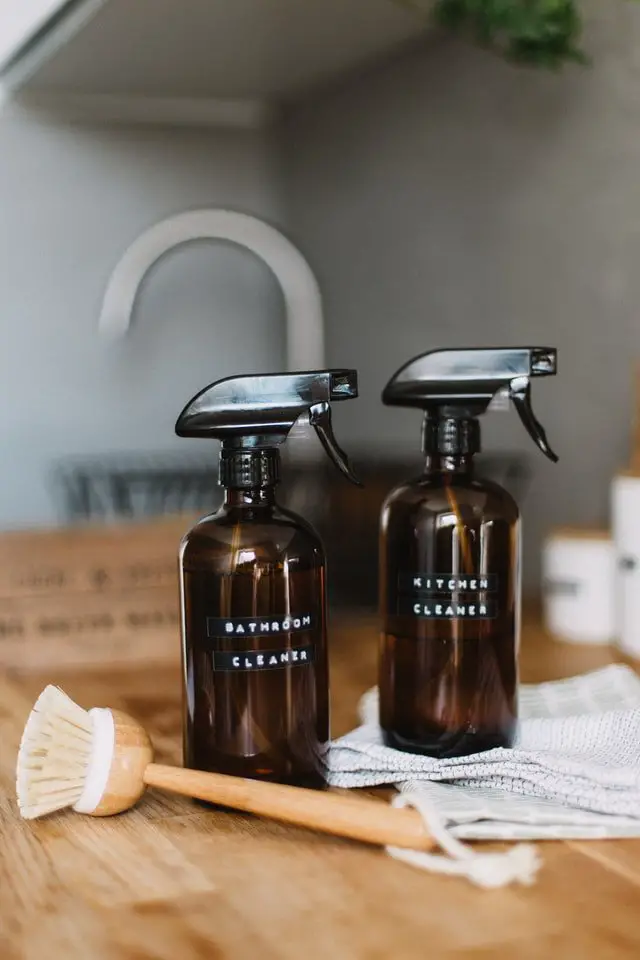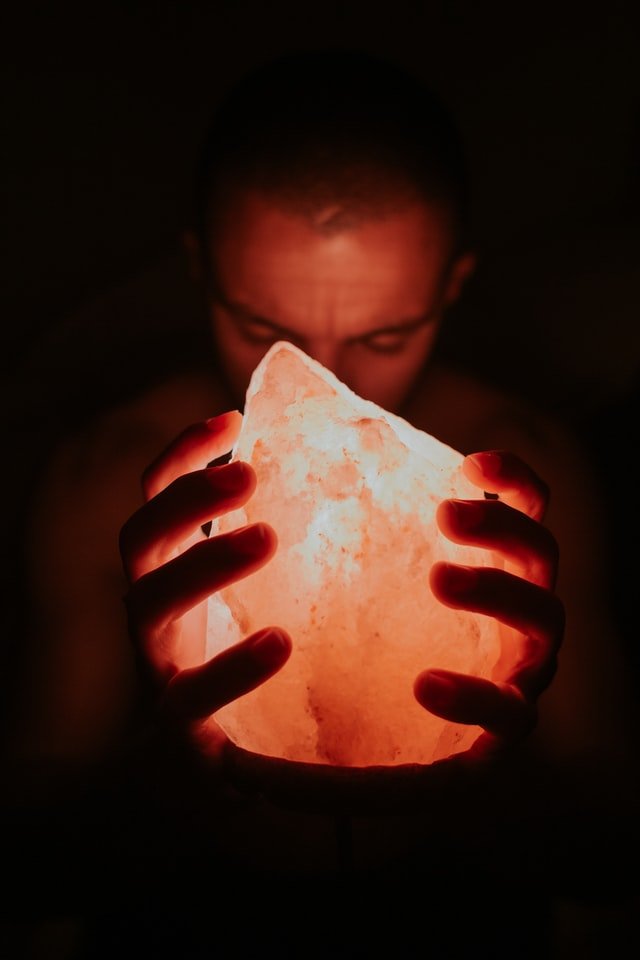Indoor air quality is very important to your health and wellbeing. Therefore, taking measures to ensure air pollutants are removed is essential to live comfortably. Before buying an expensive air purifier, let’s take a look at what natural options are available.
Many product manufacturers and blogs attribute all kinds of air-purifying qualities to their products. So I decided to take a closer look and concluded the following:
Proper ventilation is the most important factor for clean indoor air. Additionally, preventing the air from getting polluted is more effective than trying to clean it. Salt lamps or beeswax candles are not effective at improving indoor air quality.
Most ‘natural air purifiers’ don’t work
Before we take a look at some practices that can really improve your indoor air quality, let’s take a look at what doesn’t work.
Many claims have been made about Himalayan salt lamps, beeswax candles, and the benefits of houseplants. But, unsurprisingly, these are mostly marketing claims.
The fabled Himalayan salt lamp
Many blogs seem to claim that a salt lamp has air purifying properties. Normally, purifying the air requires highly technological equipment. So I took a closer look at the science behind these claims.
Well, there is not much to be found. Basically, no studies have been conducted on the effect of salt lamps on indoor air quality. That of course does not mean they do not work. Just that they were not tested.
The information I could find, however, mentions two things:
- Salt lamps can attract moisture from the air into their salt. Supposedly taking up any pollutants that were attached to this moisture. And;
- Salt lamps produce negatively charged particles (ions) that cause pollutants to more easily stick to nearby surfaces.
So, do these properties improve indoor air?
First off all, the amount of moisture a regular salt lamp can take up out of the air cannot be all that much. On top of that, many air pollutants are not related to air moisture. So they are not affected.
How much moisture a salt lamp can take from the air is unknown. However, an air dehumidifier always has a container that quickly fills up and needs to be emptied all the time. So, either the salt lamp does not take up any significant moisture, or it releases it again sooner or later.
Second, while some studies (classified as pseudoscience) say that negative ions can help with symptoms of depression, there seems to be no evidence on air purification. Although it is said that negative ions help particles stick to nearby surfaces, these surfaces could be your lungs. Additionally, particles can easily become airborne again after they land on any surface.
So, while a Himalayan salt lamp can definitely be a beautiful addition to your home, it should never be a substitute for any serious attempt at trying to improve indoor air quality.

Beeswax candles
Another product that is frequently promoted for its supposed air cleaning properties is beeswax candles. Fire and incomplete combustion, however, are some of the main sources of indoor air pollutants. Therefore, lighting a flame indoors, no matter how tiny, should make us very suspicious.
On top of that, anything that is burned turns into tiny airborne particles. So I wonder how a candle would ever remove airborne particles, instead of producing them. Could it be that beeswax candles are just the least bad candles for indoor air quality, instead of an improvement?
That is indeed what I found, beeswax candles seem to emit less air pollutants than other types of candles. (sources) This is mostly because many candles contain substances that can be hazardous to our health.
If you are really looking to improve your indoor air quality, you shouldn’t turn to burning (beeswax) candles.
What about houseplants?
There seem to be many blog posts on the internet claiming that NASA published a list of the best houseplants to purify your indoor air.
The truth, however, is that proper ventilation is by far the most important for indoor air quality. You will need literally hundreds of plants before they have any effect. And NASA only tested a few plants and ranked them. Thats is not even close to a list of the best air-purifiying plants.
Plants should never be a substitute for good habits such as ventilation and regular cleaning. I wrote an entire article on the topic of houseplants and air quality, that you can read here.
The most important factor in air pollution is ventilation
On average, indoor air quality is about 2 to 5 times worse than outdoor air. Therefore, maintaining good ventilation is the main thing you can do to keep the indoor air healthy.
The most natural way to ventilate is to have good natural ventilation in your house. Natural ventilation is almost always present in houses, especially old houses. Fresh air is coming in through cracks and other openings in the walls and ceiling and drives out the polluted indoor air.
You can improve the ventilation in your house by regularly opening windows. Additinally, opening internal doors allows for airflow from one open window to another.
If you have a ventilation system, exhaust fan, or other vents and grilles, make sure they are in good condition. Regular cleaning and replacing damaged parts greatly helps to keep them in good condition.
let’s avoid polluting the air, rather than cleaning it
The most effective way of getting clean indoor air is by preventing it from getting polluted. There are many simple, natural, ways of preventing indoor air pollution.
Cleaning products
Surprisingly, cleaning agents are a source of air pollution. Compounds emitted from cleaning agents can vary greatly and their effects depend on many factors, including its composition and reactive chemistry. It is safest to use natural cleaning agents.

Always turn on the extractor hood in the kitchen
Cooking is a source of air pollution. Therefore, you should make sure to always turn on the hood. Run it on the highest option you are comfortable with.
Additionally, whenever you are not using all the stove burners, try to use the ones that are best vented by the extractor hood. These are usually the ones at the back. Also, make sure the extractor hood is always clean and in good condition.
Don’t skip a good cleaning session
To prevent mold growth, especially in the bathroom, proper cleaning is required. It is easy to do a general cleaning session and skip the important parts such as the grout lines between your bathroom tiles. However, in this way you allow mold growth to build up, making them harder to remove the next time. I would recommend wiping the grout lines with regularity.
Additionally, you should consider to dry the shower walls and tiles after you have taken a shower, This again prevents the potential for mold growth. On top of that, the showerhead and faucets heads require a good clean as well.
Leave your shoes at the door
This is a simple habit that makes sure less dirt enters the house. Hereby preventing tiny particles to be kicked around and becoming airborne. A shoe rack or something similar might encourage your family to quickly pick up this new habit and stick to it.
Vacuum regularly
By vacuuming often, you will remove fine dust particles that will otherwise become airborne. Fine dust particles easily enter the lungs and may cause long term health effects.
Carpets, rugs and your indoor air
The relation between carpets and rugs and indoor air quality is an interesting one. Carpets and rugs trap dust particles that are kicked back into the air when you walk over them. Hereby, they contribute to a continuous circulation of airborne dust.
However, since carpets and rugs trap dust particles, they can be a dust sink when vacuumed regularly. Hereby, they can potentially contribute to the removal of airborne dust.
Additionally, carpets and rugs can themselves be a source of hazardous compounds since they wear out every time you walk on them.
If you are considering purchasing a rug, or already have a carpet or rug and want to replace it, I recommend considering buying a natural rug that does not contain hazardous substances.

